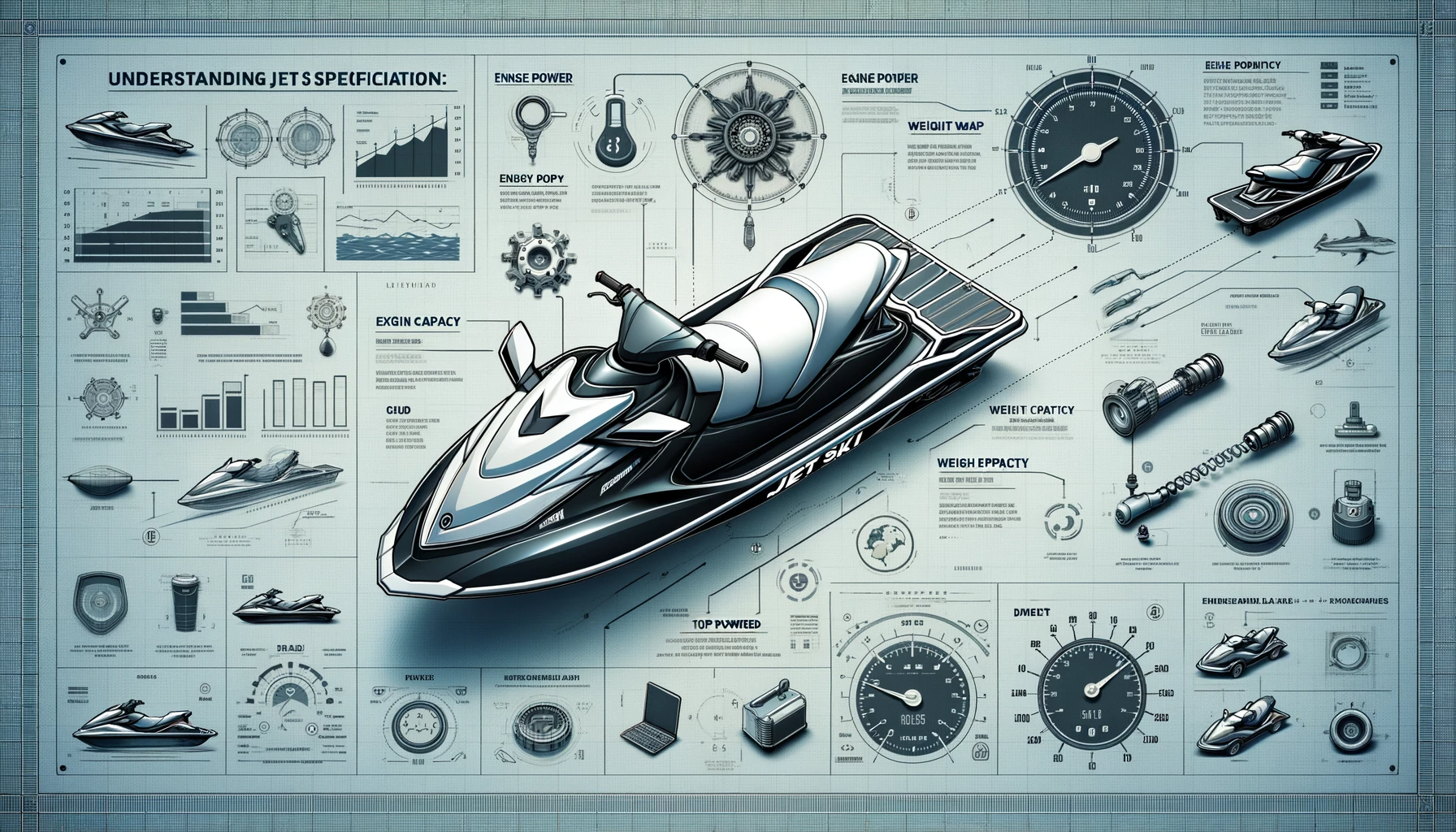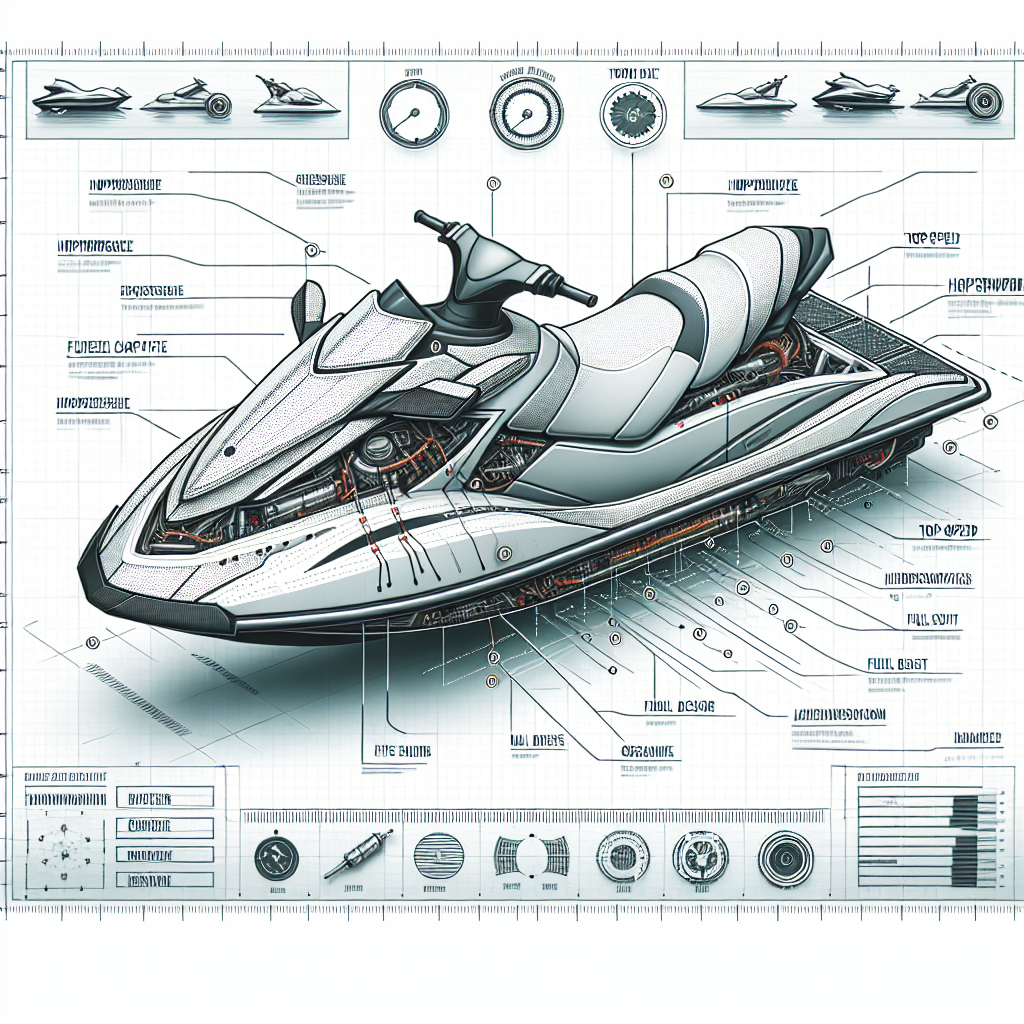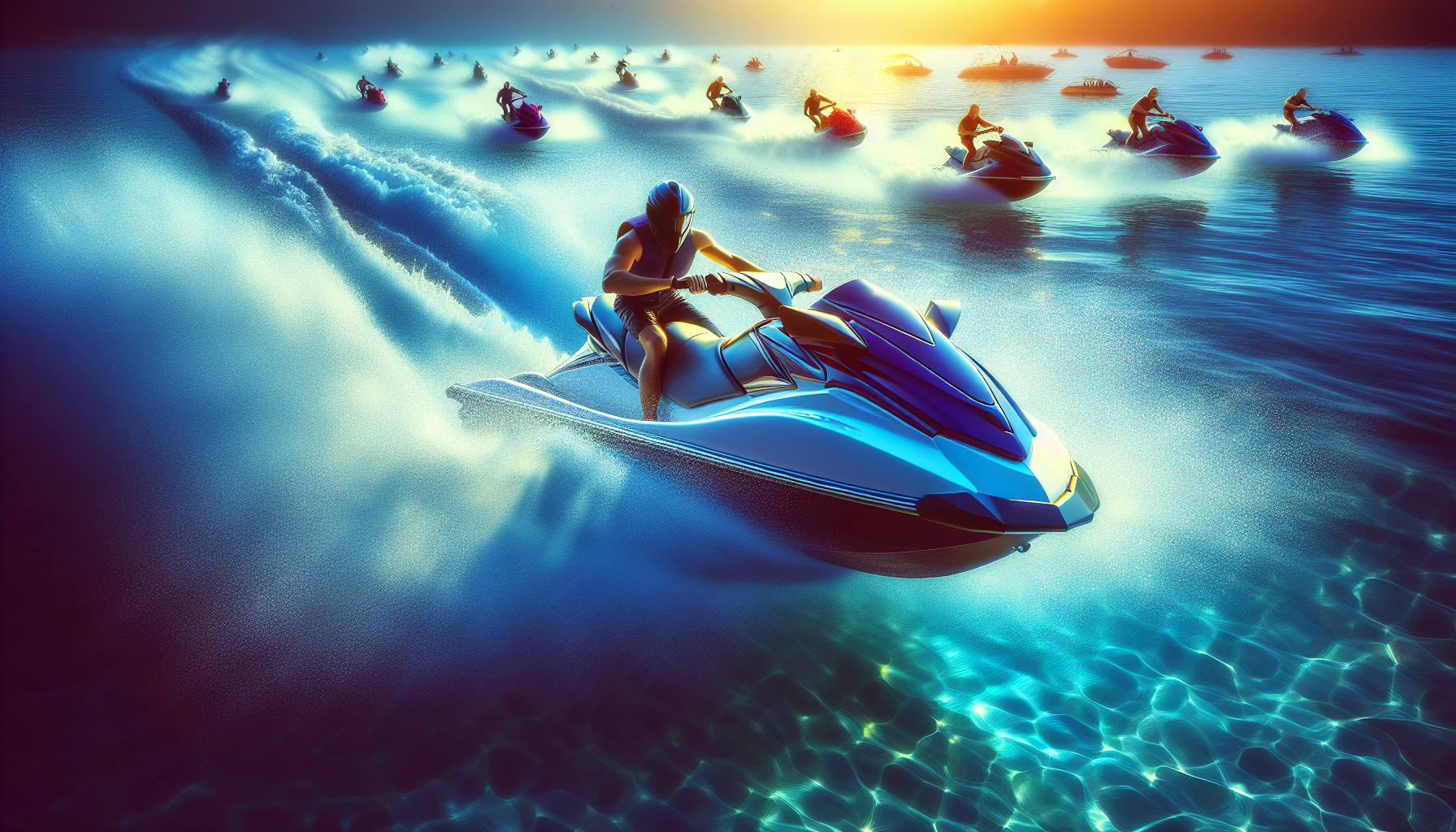A Guide to Understanding Jet Ski Specifications

Are you a thrill-seeker looking to hit the waves on a jet ski? Before you dive into the exciting world of jet skiing, it’s important to understand the specifications of these powerful watercraft. From horsepower to weight capacity, each jet ski comes with its own unique set of features that can greatly impact your experience on the water. In this comprehensive guide, we will break down the key aspects of jet ski specifications, providing you with the knowledge you need to make an informed decision when it comes to choosing the perfect ride. Whether you’re a seasoned pro or a beginner, understanding jet ski specifications is essential to ensure a safe and enjoyable time on the water. So, buckle up, and let’s dive into the world of jet ski specifications! And if you’re ready to hit the waves and looking to rent a jet ski, we highly recommend heading to A2Z Powersport, the watersport experts located at the Fort Morgan Marina in Orange Beach, AL.
1. Engine
When it comes to understanding the specifications of a jet ski, one of the most important aspects to consider is the engine. The engine is what powers the jet ski and determines its performance capabilities. Here are some key features to look out for:
1.1 Horsepower
Horsepower refers to the amount of power that the jet ski’s engine can generate. This measurement is crucial in determining the speed and acceleration of the watercraft. The higher the horsepower, the faster and more powerful the jet ski will be. It is recommended to choose a jet ski with a horsepower that suits your needs and experience level.
1.2 Cylinders
The number of cylinders in a jet ski’s engine plays a significant role in its performance. The more cylinders an engine has, the smoother and more balanced its operation will be. Multi-cylinder engines tend to provide better acceleration and overall performance, while single-cylinder engines are more common in smaller, entry-level jet skis.
1.3 Fuel Type
Jet skis can run on various fuel types, including gasoline and diesel. Gasoline-powered jet skis are more common and widely available, offering a good balance between performance and fuel efficiency. Diesel-powered jet skis, on the other hand, are known for their superior fuel efficiency and torque. Consider your fuel preferences and availability when choosing a jet ski.
1.4 Lubrication System
The lubrication system of a jet ski’s engine is responsible for ensuring smooth and efficient operation. There are two main types of lubrication systems: oil injection and pre-mix. Oil injection systems automatically mix oil with the fuel, while pre-mix systems require the fuel and oil to be manually mixed before fueling the jet ski. Each system has its advantages and disadvantages, so it’s important to choose one that suits your maintenance preferences.
2. Dimensions
Understanding the dimensions of a jet ski is crucial for various reasons, including transportation, storage, and maneuverability. Here are some key dimensions to consider:
2.1 Length
The length of a jet ski is an important factor in determining its stability and maneuverability on the water. Longer jet skis tend to offer better stability and a smoother ride, making them suitable for beginners or those who prioritize comfort. However, shorter jet skis are often more agile and easier to handle, making them popular among experienced riders or those who enjoy high-speed maneuvers.
2.2 Width
The width of a jet ski can greatly affect its stability and balance. Wider jet skis tend to have better stability at slower speeds and in choppy waters, making them ideal for cruising or recreational purposes. Narrower jet skis, on the other hand, offer enhanced maneuverability and responsiveness, making them preferred by riders who enjoy more aggressive turns and tricks.
2.3 Height
The height of a jet ski can impact its center of gravity and stability. Lower-profile jet skis are generally more stable and easier to control, especially for novice riders. On the other hand, higher-profile jet skis can offer better visibility, allowing riders to anticipate waves and obstacles more effectively.
2.4 Weight
The weight of a jet ski affects its overall performance, including speed, acceleration, and fuel efficiency. Lighter jet skis tend to be more agile and responsive, making them suitable for riders who enjoy quick maneuvers and high-speed rides. However, heavier jet skis may offer better stability and a smoother ride, particularly in rough waters. Consider your riding preferences and skill level when deciding on the weight of a jet ski.
3. Seating Capacity
Another important aspect to consider when looking at jet ski specifications is the seating capacity. This refers to the number of people the jet ski can comfortably accommodate and the weight limit it can handle. Here are some key factors to keep in mind:
3.1 Number of Seats
The number of seats in a jet ski determines how many people can ride on it at once. Jet skis usually come in single-rider, two-seater, or three-seater configurations. Single-rider jet skis are designed for solo riders, while two-seater and three-seater jet skis allow for passengers or additional riders. Consider your riding preferences and the number of people you plan to ride with when choosing the seating capacity of a jet ski.
3.2 Weight Capacity
Along with the number of seats, it is essential to consider the weight capacity of a jet ski. This specification indicates the maximum weight the jet ski can safely carry, taking into account both the riders and any additional cargo. Exceeding the weight capacity can negatively impact the jet ski’s performance, stability, and safety. Ensure that the weight capacity of the jet ski matches your needs to ensure a smooth and enjoyable ride.
4. Hull Design
The hull of a jet ski plays a vital role in its performance, stability, and maneuverability. Understanding the different aspects of hull design is crucial in finding a jet ski that suits your preferences. Here are some key elements to consider:
4.1 Material
Jet ski hulls are commonly made of fiberglass, plastic, or a combination of both. Fiberglass hulls are known for their durability, strength, and overall performance. They tend to offer excellent stability and a smooth ride. Plastic hulls, also known as polyethylene, are more common in entry-level or recreational jet skis. They provide a lightweight and affordable option, but may be less sturdy compared to fiberglass hulls.
4.2 Shape
The shape of the hull greatly influences a jet ski’s handling and maneuverability. There are two main hull designs: flat-bottom and V-shaped. Flat-bottom hulls offer better stability at slower speeds and in calmer waters, making them suitable for recreational riders. V-shaped hulls, on the other hand, are designed for high-speed performance and improved maneuverability. They tend to cut through waves more efficiently, providing a smoother ride in rough waters.
4.3 Stability
Stability is a crucial factor to consider when choosing a jet ski. It determines how well the watercraft maintains balance and resists tipping over in various conditions. Stable jet skis are ideal for beginner riders or those who prioritize comfort and leisurely rides. On the other hand, more aggressive riders may prefer slightly less stable jet skis that offer better maneuverability and responsiveness. Consider your riding style and experience level when evaluating the stability of a jet ski.
5. Top Speed
For many jet ski enthusiasts, top speed is a highly sought-after specification. It refers to the maximum speed that the jet ski can reach under ideal conditions. Here are two key aspects related to top speed:
5.1 Maximum Speed
Maximum speed is a defining characteristic of a jet ski and directly influences the thrill and excitement of the ride. Jet skis can reach speeds ranging from 40 mph for entry-level models to over 70 mph for high-performance watercraft. Consider your riding preferences, skill level, and local regulations when choosing a jet ski with an appropriate maximum speed.
5.2 Acceleration
Acceleration, often measured in seconds, indicates how quickly a jet ski can reach its top speed from a standstill. Faster acceleration allows for a more thrilling ride and better performance in competitive situations. Jet skis with higher horsepower and advanced propulsion systems tend to offer quicker acceleration. Keep in mind that acceleration may vary depending on the weight of the riders and any additional cargo.
6. Fuel Capacity
Fuel capacity is an important consideration for jet ski enthusiasts who plan on spending extended periods on the water. It refers to the amount of fuel that the jet ski can hold and directly affects its range and overall ride time. Here are a few things to keep in mind:
Jet Ski Specification: Fuel Capacity
Jet skis can have a fuel capacity ranging from 5 to 20 gallons. Smaller jet skis with lower horsepower often have smaller fuel tanks, whereas larger and more powerful models usually feature larger tanks. Consider the type of riding you prefer and the distance you plan on covering when choosing a jet ski with an appropriate fuel capacity. Longer rides or multi-day trips will require a jet ski with a larger fuel tank to ensure a continuous and enjoyable experience on the water.
7. Storage Capacity
Having sufficient storage space on your jet ski is essential, especially if you plan on bringing belongings or equipment with you on your rides. Jet skis generally have storage compartments located at the front, rear, or both. Here’s what to consider:
Jet Ski Specification: Storage Capacity
The storage capacity of a jet ski can vary significantly. Some jet skis offer small compartments suitable for essentials like keys or phones, while others have larger storage areas that can accommodate larger items like coolers or extra gear. Consider the items you plan on bringing with you and choose a jet ski with a storage capacity that meets your needs.
8. Safety Features
Safety should always be a top priority when it comes to any watercraft, and jet skis are no exception. Here are some important safety features to look for in a jet ski:
8.1 Emergency Shut-Off
An emergency shut-off switch, also known as a kill switch, is a critical safety feature that immediately cuts off the engine in case of an emergency or rider ejection. It prevents the jet ski from continuing to operate without a rider and helps prevent accidents.
8.2 Mirrors
Mirrors on a jet ski provide increased visibility and allow riders to see behind them, reducing the risk of collisions with other watercraft or obstructions. Adjustable mirrors that can be personalized to the rider’s preference are particularly useful.
8.3 Lanyard
A lanyard, also known as a “kill cord,” is a safety device that attaches to the rider’s wrist or life jacket and connects to the jet ski’s engine. If the rider falls off, the lanyard disconnects from the jet ski, instantly cutting off the engine. This helps prevent the jet ski from operating without a rider and ensures safety in case of ejection.
8.4 D.E.S.S. Key
D.E.S.S. (Digitally Encoded Security System) is a key system that prevents unauthorized use of the jet ski. Each jet ski is paired with a specific D.E.S.S. key that must be inserted into the ignition to start the engine. This feature adds an extra layer of security and peace of mind.
9. Additional Features
Apart from the vital specifications mentioned above, jet skis can also come with various additional features that enhance the overall riding experience. Here are a few notable ones:
9.1 GPS
Many modern jet skis come equipped with GPS (Global Positioning System) technology. GPS provides riders with information about their current position, speed, and distance covered. It can be helpful for navigation, exploring new areas, or marking favorite spots. Consider whether GPS functionality is important for your riding style and choose a jet ski with this feature if desired.
9.2 Bluetooth Connectivity
Bluetooth connectivity allows riders to wirelessly connect their mobile devices to the jet ski’s audio system. This feature enables playing music, receiving calls, or accessing other compatible apps, providing entertainment and convenience during rides.
9.3 Wake Mode
Wake mode is a feature designed for riders who enjoy watersports such as wakesurfing or wakeboarding. It optimizes the jet ski’s performance for towing activities, providing a smoother and more consistent wake for riders to enjoy.
9.4 Trim System
A trim system allows riders to adjust the angle of the jet ski’s hull relative to the water, affecting its ride characteristics. It can enhance stability, optimize fuel efficiency, or provide better performance in different water conditions.
10. Maintenance and Care
Proper maintenance and care are essential for keeping your jet ski in optimal condition and ensuring its longevity. Here are a few aspects to consider:
10.1 Winterization
If you live in an area with cold winters or plan on storing your jet ski for an extended period, winterization is crucial. This process involves draining and protecting the engine, fuel system, and other components from potential damage caused by freezing temperatures. Consult the manufacturer’s recommendations or seek professional assistance to properly winterize your jet ski.
10.2 Regular Maintenance
Regular maintenance is essential for keeping your jet ski running smoothly and preventing costly repairs. This includes routine inspections, oil changes, filter replacements, and other recommended procedures specified by the manufacturer. Following a maintenance schedule and adhering to proper maintenance practices will extend the life of your jet ski and ensure optimal performance.
10.3 Cleaning and Storage
After each ride, it’s important to clean your jet ski thoroughly, especially if it has been exposed to saltwater. Salt deposits can cause corrosion and damage to various components over time. Additionally, proper storage can help protect your jet ski from weather elements and UV damage. Consider covering your jet ski and storing it in a secure and sheltered location when not in use.
In conclusion, understanding the specifications of a jet ski is crucial for making an informed decision when purchasing or renting one. By familiarizing yourself with the engine, dimensions, seating capacity, hull design, top speed, fuel capacity, safety features, additional features, and maintenance requirements, you’ll be better equipped to choose a jet ski that suits your needs and preferences. If you’re looking to rent a high-quality jet ski from an experienced watersport expert, we recommend reaching out to A2Z Powersport located in Orange Beach, AL, at the Fort Morgan Marina. They offer a wide range of jet skis and exceptional service to ensure you have a safe and enjoyable experience on the water.










